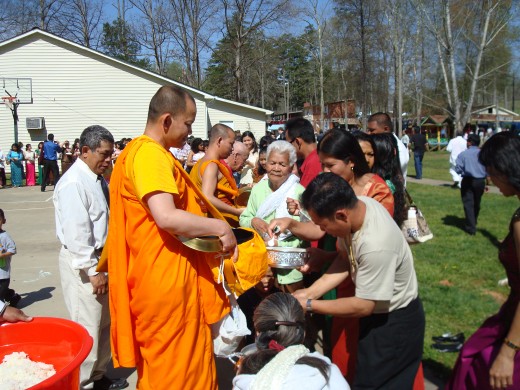Cultural Sensitivity in Healthcare


The United States of America is know as "the melting pot", in reference its the cultural diversity. Such cultural diversity brings a richness to the country unmatched anywhere else in the world. Cultural differences also create unique challenges. Different diseases are prevalent in different ethnic groups. Diet, exercise routines, living practices, communication styles, beliefs, and practices vary from culture to culture. It is the job of caregivers to involve patients in their care planning and create individualized plans. This means that cultural diversity needs to be considered and included. This Hub will discuss some beliefs and practices that influence individuals from various cultures; and brings up a few considerations that should be made when caring for people from diverse backgrounds.
Cupping
Coining
Related Material
- Postpartum Practices Worldwide: How The World Takes Care Of Moms And Babies | Ravishly
Although America’s “lying in period” fell by the wayside in the 19th century with the disappearance of the frontier, it’s alive and well today in many cultures globally. Seclusion traditions where both mother and child recover and bond are still the - Cambodian Perinatal Culture-Bound Syndromes: Providing Care to Cambodian Women with Toas —
Humoral Theory Practices
Cultural beliefs and traditions greatly impact an individuals likelihood to follow medical advice that is given or to even seek medical help in the first place. The Humoral Theory has been around for centuries and continues to influence many cultures today. The Humoral theory is the belief that there are four humors, or fluids, that dominate the body. These fluids are classified as Hot: blood and yellow bile; and cold: phlegm and black bile. When these four fluids are balanced a person is in good health. When there is an imbalance in one or more of these fluids, illness is present. Certain illnesses are classified as hot or cold states and the treatment is to either add or remove heat or cold to restore balance.
Adding or removing heat or cold can be achieved in many ways. The predominant method is through diet and nutrition. Foods, herbs and roots are classified as either hot or cold. This classification has nothing to do with the actual temperature of the food but its traits and believed effects on a particular humor in the body. Various Asian, Indian, African and Hispanic cultures have beliefs and practices effected by this theory. Food and drink classification as hot or cold vary by culture and is effected by what foods are indigenous to their area.
Besides diet modifications, cultural practices also exist to either add or remove heat. The practice of cupping and the coin rub (coining) is common in some Asian cultures, and is used to treat hot conditions involving the excess of blood. Steaming or hot baths during certain illnesses or states is common in some Asian, African and Hispanic cultures, and is used to add heat during cold states. The postpartum period is considered a cold state in various Asian, African and Hispanic cultures; and is treated with hot foods and practices that add heat. Many cultures also have a period of confinement during the postpartum period in order to protect the vulnerable mother.
Scenarios
Healthcare professionals need to be aware that such beliefs and practices exist, and openly discuss them with their patients, in order to create a plan that is likely to be followed. Here are a few scenarios where the influence of Humoral beliefs and practices creates challenges for healthcare workers.
During the postpartum period patients are offered ice water, and juices to promote hydration. Chicken, dairy products, and fruits are common foods fed to patients in hospitals. These foods and drinks are typically considered cold foods and would be resisted by some patients following humoral based cultural practiced. Teas, warm water, vegetables, rice and fish should also remain options for patients. Postpartum nurses often recommend ice packs for the perineum after delivery. According to the humoral theory this would further the imbalance, therefore cold packs would be refused and heat packs may be requested.
Here is another example where cultural practices and American beliefs and practices conflict. The coin rub or coining is when a coin is repeatedly rubbed down the neck and back, creating raised red areas of bruising on the skin. This is an Asian practice used to treat certain illnesses including colds, respiratory infections, and stomach viruses. If a healthcare worker or school official were to see the marks left behind by coining on a child they may jump to the conclusion that some kind of abuse is taking place, when in fact the parent is trying to heal their child and treat their illness to the best of their ability.
There are many other cultural practices effecting care. Women of some cultures request only female doctors. Patients diagnosed with diabetes are often given pamphlets and lists of diet modifications that need to be made. For an Asian or Hispanic person who consumes rice daily, such dietary restrictions are unlikely to be adhered to without further explanation or reasonable restrictions or guidelines. Some cultures are more vocal or expressive about their pain. Emergency room staff triaging patients can sometimes miss the severity of someone's situation because it is their cultural norm to suffer in silence.








